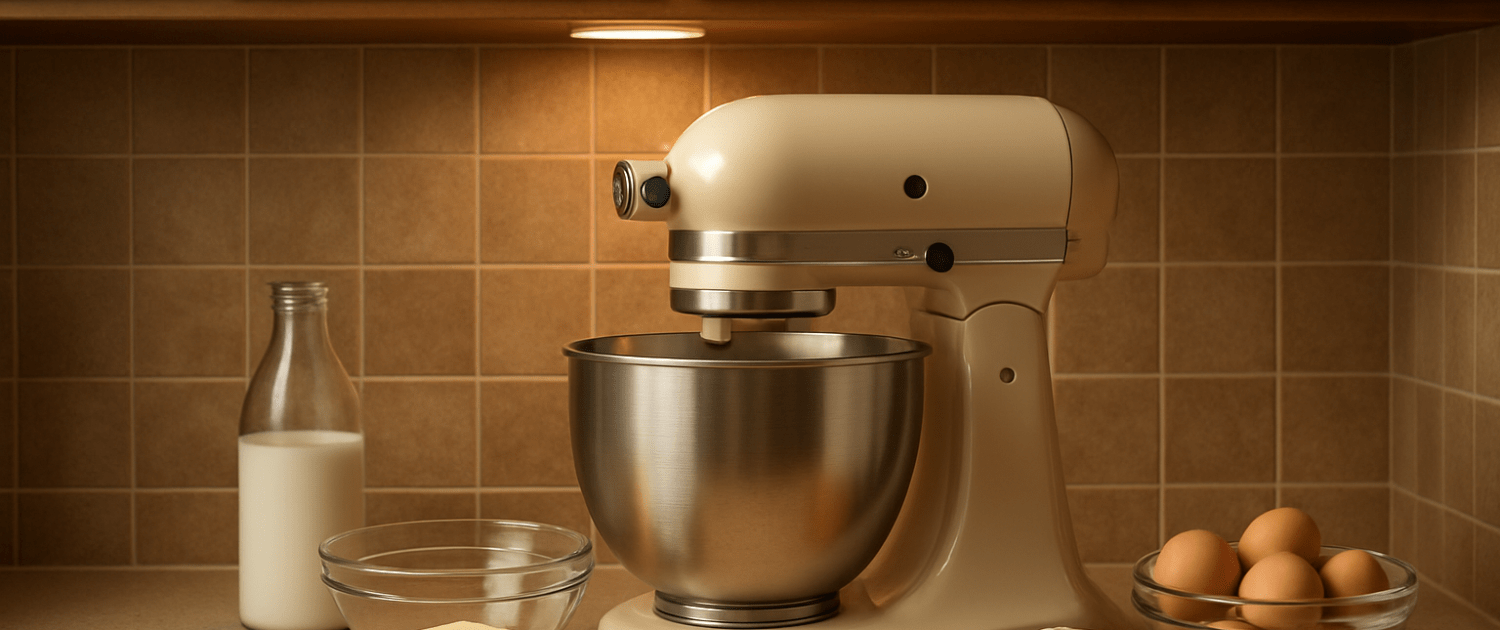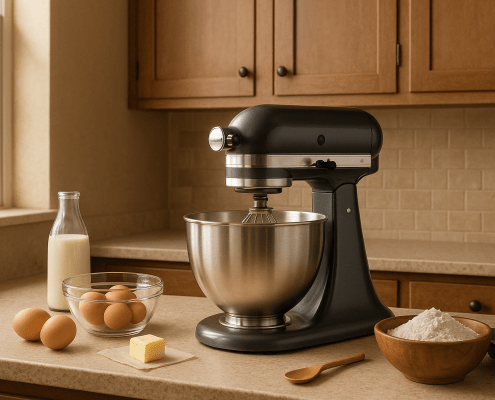Why Your KitchenAid Stand Mixer Won’t Turn On and How to Fix It
Steven E / Thursday July 10, 2025
A KitchenAid stand mixer is the crown jewel of many kitchens, a powerful, dependable machine that can whip, knead, and mix just about anything you throw at it. But if you plug it in, flip the switch, and… nothing happens? That can be frustrating, especially when you’re mid-recipe.
The good news is that a stand mixer that won’t turn on isn’t necessarily broken beyond repair. Most of the time, it’s something simple you can diagnose and fix yourself. This guide will walk you through why your mixer might refuse to start, how to test parts, and how to make quick repairs so you can get back to baking.
The information in this article may not apply to your specific appliance model. We recommend consulting your manufacturer’s documentation or contact us with any questions.
Why Won’t Your Mixer Turn On?
When your KitchenAid mixer won’t power up, it usually comes down to one of these common issues:
- Power supply problems.
- Faulty power cord or plug.
- Worn or stuck motor brushes.
- Broken speed control plate.
- Overheating and tripped thermal overload.
- Internal wiring or motor failure.
We’ll start with the easiest fixes.
What You’ll Need
Before you start, grab a few basic tools and supplies:
- Phillips and flathead screwdrivers.
- Needle-nose pliers.
- Multimeter (to test continuity and voltage).
- Replacement carbon brushes, power cord, or speed plate (if needed).
- Clean rags and a soft brush.
Always unplug the mixer before opening it up or working on it.
Step 1: Check the Power Source
The first thing to rule out is your electrical outlet.
- Plug another appliance into the same outlet and make sure it works.
- If the outlet is dead, check your breaker panel for a tripped breaker.
- Avoid using an extension cord or power strip, as these can sometimes fail.
- Plug your mixer directly into a known working outlet.
If you still get nothing, it’s time to open up the mixer and check the internal parts.
Step 2: Inspect the Power Cord and Plug
Over time, the cord can fray or the plug can loosen internally, cutting power to the machine.
- Unplug the mixer.
- Look closely at the cord for cracks, cuts, or exposed wires.
- Check the plug prongs for signs of burn marks or looseness.
- If the cord or plug looks damaged, replace it.
How to replace the power cord:
- Remove the rear cover of the mixer by unscrewing the two screws.
- Disconnect the power cord wires from the internal terminal.
- Thread the new cord through the strain relief and connect the wires exactly as the old one.
- Reassemble the rear cover and plug in to test.
Step 3: Let It Cool Down
If your mixer stopped mid-use, it may have overheated. KitchenAid mixers have a built-in thermal overload switch that cuts power to protect the motor.
- Unplug the mixer and let it sit for 20–30 minutes.
- Plug it back in and try again.
If it works after cooling off, you may need to adjust how you’re using the mixer:
- Don’t overload it with dough that exceeds its rated capacity.
- Use lower speeds for heavy mixtures.
- Give it a break between long runs.
Step 4: Check the Carbon Brushes
If your mixer still won’t turn on, worn or stuck carbon brushes are a common cause. These brushes carry electricity to the motor armature, and when they wear down or get stuck, the motor won’t run.
How to check the brushes:
- Unplug the mixer.
- On each side of the motor housing are black caps, unscrew these.
- Remove the brushes and inspect them. They should be at least 1/2 inch long and they should move freely and spring back into place.
- If they’re cracked, chipped, worn down, or not springing back, replace them.
- Insert the new brush into the holder, aligning the curve with the commutator.
- Replace the cap and tighten snugly.
- Repeat for the other side.
- Plug in and test.
Step 5: Inspect the Speed Control Plate
The speed control plate is located behind the rear cover and manages power to the motor. If it’s broken or misaligned, the mixer won’t turn on.
- Remove the rear cover.
- Locate the control plate and watch how it moves when you adjust the speed lever.
- Check that the contact points are clean and properly aligned.
- Look for burn marks, corrosion, or loose wires.
If the plate is damaged or the contacts are too worn to repair, replace the speed control plate.
Step 6: Test the Motor Windings
If all else fails, the motor windings could be burned out.
- Unplug the mixer and open the motor housing.
- Use a multimeter to measure resistance across the motor windings.
- Compare the readings to your model’s specifications.
- If the windings are open or shorted, the motor may need to be replaced.
Step 7: Clean and Tighten Everything
While you’re inside the mixer, take a few minutes to:
- Brush away any flour, dust, or debris.
- Wipe the housing and motor with a dry rag.
- Check all screws, connectors, and wires for tightness.
Sometimes, something as simple as a loose wire or dirty contact can prevent the mixer from powering on.
Run a Test
After making repairs:
- Reassemble the housing and rear cover.
- Plug the mixer back in.
- Turn it on at the lowest speed and gradually increase.
If it runs normally, congratulations, you’ve fixed it!
Tips to Keep Your Mixer Running Strong
- Don’t overload your mixer beyond its rated capacity.
- Keep it clean and free of flour dust and grease buildup.
- Check and replace carbon brushes every few years, especially if heavily used.
- Allow the mixer to cool between heavy batches.
- Re-grease the gearbox every 3–5 years to keep gears running smoothly.
Regular maintenance can prevent most problems and extend the life of your mixer for decades.
Where To Find Us
If you need any replacement parts for your appliances, you can enter your model number at AppliancePartsPros.com to locate and order them quickly. Most orders arrive in just two business days, and we have tons of great information in our repair help section and YouTube videos to help you troubleshoot.
Stay connected with the latest DIY tips, tutorial videos, and repair guides by following us on Facebook, Instagram, and Twitter. We love hearing about your repair stories and successes. If you need more help or want personalized guidance, feel free to reach out. We’re ready to help you take on your next project with confidence!
With nearly a decade of experience in providing top-notch customer service regarding appliance parts and repair, Steven enjoys sharing practical advice, troubleshooting tips, and interesting information to help readers stay informed.





